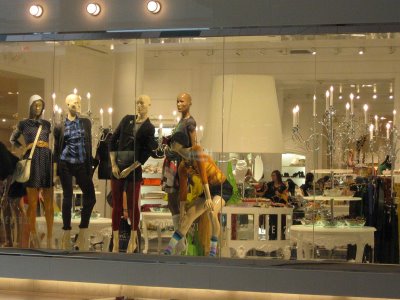Chanel. Marc Jacobs. Tory Burch.
Fashion houses that we all love but many aren't within a salary bracket to have
at our disposable. Enter Forever 21, H&M,Topshop, and Zara. Suddenly it is affordable
to emulate the season's newest fashions. What used to be fashion seasons of
Spring, Summer, Fall, and Winter, we now have 'fast fashion', fashion styles
that are compressed to 4-6 weeks or less. As consumers are finding creative
ways to emulate the new styles on the runway, fast fashion businesses are
utilizing the supply chain management in new ways to meet the consumer's needs.
Fast fashion retailers are an affordable retail establishments that are committed to providing trendy new styles at prices that will not break anybody's wallet. For example, headquartered in Los Angeles, California, Forever 21 generates fashion products with a lightning speed time cycle. Forever 21 focuses on bridging the gap between high fashion and the American budget consumer, and have accomplished this by ensuring their supply chain management is in its most efficient delivery system.[1]
Many fast fashion retailers utilize the Quick Response Method to minimize the time between design to manufacturer. Efficient supply chains are critical for fast fashion to meet the consumer's demands for new trendy products. Many fast fashion retailers have adopted 'leagile', a hybrid combination of lean and agile techniques to optimize their supply chain. www.husdal.com has a great way of explaining leagile:
"Leagile has emerged as an
answer to the problem of reconciling long lead times with unpredictable demand.
In a certain (predictable) world, going lean is fine,
it is a cost-saver. However, when demand is uncertain, a company must
retain its responsiveness vis-a-vis its customers. This is only possible if the
supply chain is agile. But
what if demand is unpredictable, while lead times are long, as they typically
are in today’s global outsourcing? That is where leagile has a mission."[2]
I have certainly benefit greatly
from the availability of fast fashion in my life, and understanding its ability
to apply supply chain techniques to predictable supply and unpredictable demand
offers a whole new perspective to a new crop of retailers ready to sell the
newest fashion. There’s still a lot of work to be done in this new realm of
business, as the quick product outputs have caused a new problem:
Zara vs. Dolce & Gabbana
A problem of copycats and the de-valued perception of fashion houses. Perhaps this is an ethical discussion for another time, but for now, I'll see you at the mall.


No comments:
Post a Comment
Note: Only a member of this blog may post a comment.